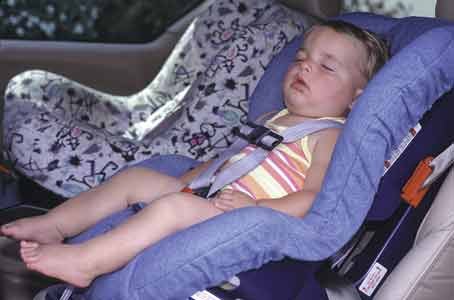TOWSON, Md. — Although the official start of summer is over a week away, most of Maryland is expected to get a taste of the hot and humid season as temperatures are forecasted to climb to 90 degrees Fahrenheit or higher until the early part of the weekend. The upcoming high temperatures are a reminder to parents and caregivers to not leave children unattended in vehicles, as the risk of serious injury or death is heightened for children left alone in vehicles.
Last year, 30 children lost their lives, including three children in Maryland and one in Virginia, as a result of heatstroke due to being left alone in a vehicle, according to research by San Jose State University’s Department of Meteorology & Climate Science at www.noheatstroke.org.
According to the University, in 2015 three children, one in Arizona and two in Florida, have died as a probable cause of vehicular heatstroke, while a fourth child’s death in Louisiana on June 5 has been confirmed as a heatstroke death.
Contrary to prevalent view, it doesn’t have to be extremely hot outside for heatstroke to set in, warns AAA Mid-Atlantic. For example, even on a day with 72 degrees Fahrenheit, the temperature inside a car can increase by 30 to 40 degrees in an hour, and 70 percent of that increase occurs in the first 30 minutes, medical experts warn. A 2014 survey showing that parents were willing to leave children unattended in vehicles is concerning, says AAA Mid-Atlantic. Fourteen percent of parents surveyed had intentionally left their children under kindergarten age alone in a vehicle while 23 percent of parents of children age three and under had done so. The survey was conducted by Public Opinion Strategies of Washington, D.C.
“Young children who cannot escape the vehicle on their own are at higher risk for injury when left alone,” said Ragina Cooper Averella, AAA Mid-
Atlantic’s Manager of Public and Government Affairs. “Aside from heatstroke, there are the risks of accidental injury and the risk of child abduction. The internal temperature of a vehicle can rise by 19 degrees in only 10 minutes and can easily reach 200 degrees.”
Heatstroke is the leading cause of non-crash vehicle deaths for children under the age of 14, representing 61 percent of non-crash related fatalities in this age group, according to the National Highway Traffic Safety Administration (NHTSA). Since 1998, there have been at least 640 heatstroke deaths of children left in cars, according to San Jose State University’s Department of Meteorology & Climate Science. The same research states that on average, 37 children die each year, or one approximately every 10 days. The University’s department review of media reports shows that 95 percent of the children who died of heatstroke from 1998-2013 were age five and under. Prevention is the best way to keep heatstroke at bay. Just remember to ACT!
*Avoid heat stroke-related injury and death by never leaving your child, even for a minute.
*Create reminders and habits that give you and any caregivers a safety net. Leave an item needed at your next stop in the back seat so you don’t forget about your loved one.
*Take action if you see an unattended child or pet in a vehicle. Dial 911 and follow the instructions of emergency personnel.
Additional tips on keeping children safe is available at: safercar.gov.
